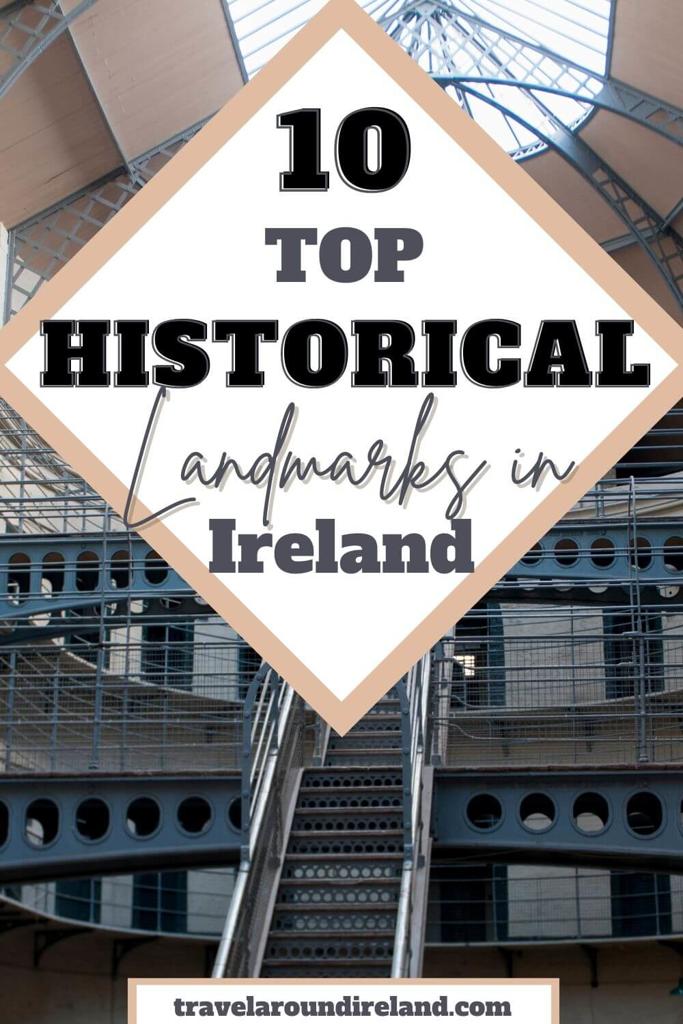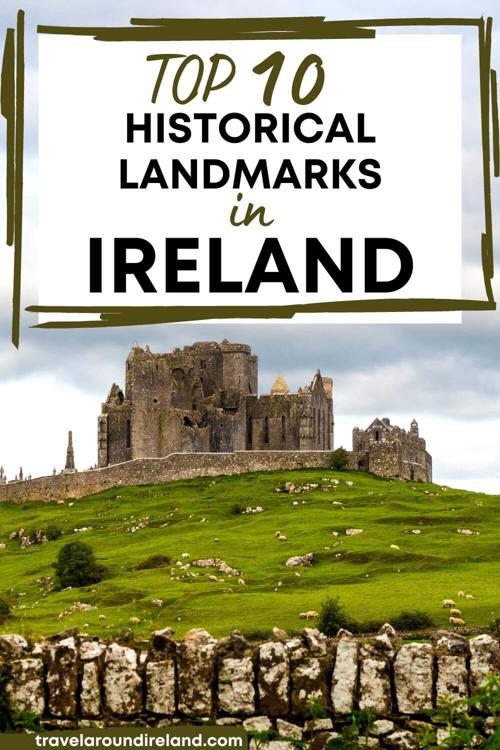Love history and want to know what are the best man-made historical landmarks in Ireland. Then you are in the right place.
When it comes to historical landmarks in Ireland, there are plenty to pique the interests of all history buffs. From medieval sites such as castles to Neolithic passage tombs, many of the Irish historical sites frequented by visitors to the Emerald Isle are also among the most famous landmarks of Ireland. So, if history is your thing and you are looking to add a few places to your Ireland itinerary, then you’ll love this list.
Best man-made and historical landmarks in Ireland
This list of the best historic sites in Ireland covers both the Republic and Northern Ireland and includes things such as castles, tombs, and man-made landmarks of Ireland. This list details some of the most amazing landmarks in Ireland to visit that are of historical importance and also includes one interesting man-made landmark worth noting.
Rock of Cashel, Tipperary
Also known as Patrick’s Rock, one of the most famous historical Irish landmarks is the Rock of Cashel in County Tipperary. This imposing structure sitting on top of a hill and visible for miles around is also one of the best places to visit in Ireland.
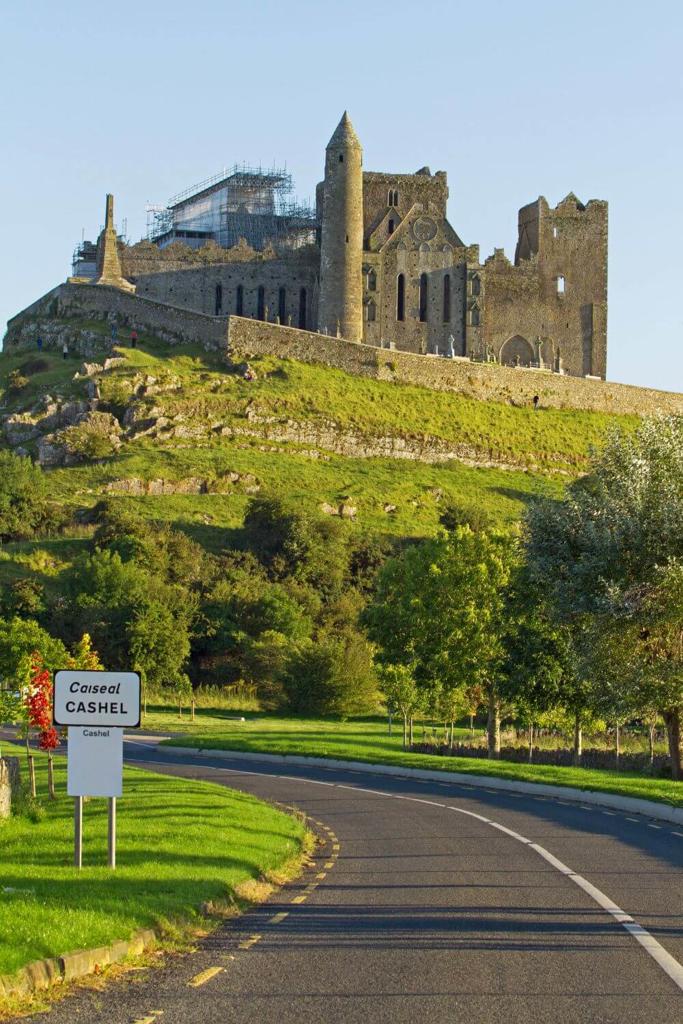
This historical landmark in Ireland was founded in the 12th century on what was once the seat of the High Kings of Ireland. The site includes the Abbey/Cathedral, a Round Tower, graveyard, and a chapel. The Round Tower is the oldest and tallest structure at the Rock of Cashel and dates from the beginning of the 12th century.
The cathedral, which is roofless, dates from the 13th century and is an impressive building, even with its missing roof. The arches at the top of the walls give visitors a sense of what it must have looked like.
Cormac’s Chapel contains Ireland’s only surviving Romanesque frescoes, and there are examples of Irish high crosses in the graveyard.
The Rock of Cashel is one of the most popular tourist sites in Ireland, so arrive early if you want to avoid the peak times of day when lots of tours arrive.
Location: Moor, Cashel, Co. Tipperary
Newgrange Passage Tomb, Meath
One of the most important national monuments of Ireland is also one of the oldest. Newgrange Passage Tomb is just one of many tombs located in the Brú na Bóinne Valley region in County Meath.
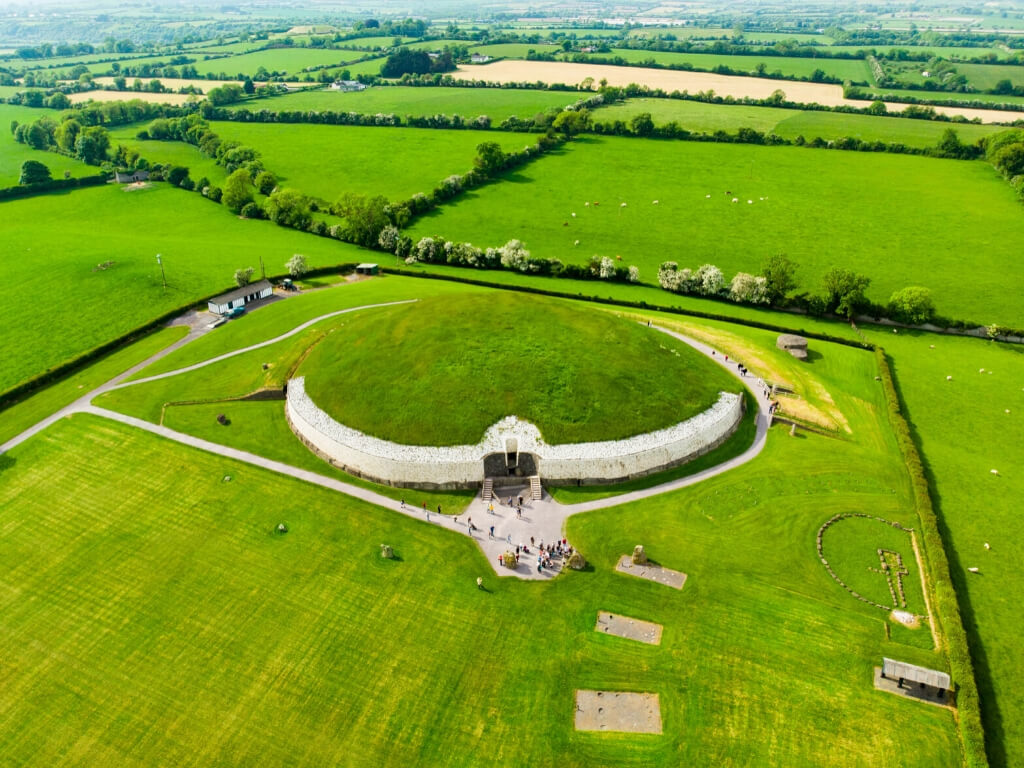
Newgrange Passage Tomb is a prehistoric monument built during the Neolithic Period around 3200 BC, making it older than the pyramids of Giza or Stonehenge.
The passage is the finest among those located at Brú na Bóinne and it is perfectly aligned with the winter solstice, during which the passage to the burial chamber is bathed in light during sunrise.
As well as Newgrange, Brú na Bóinne also contains two other large passage tombs, Knowth and Dowth, although Dowth can only be viewed from outside. The site also has many other burial mounds and standing stones, and the Brú na Bóinne Valley is a UNESCO World Heritage Site.
Access to Newgrange and the other sites is by guided tour only, leaving from the Visitor Centre at the entrance to the area. For those wishing to witness the winter solstice from within the chamber, a public lottery draw takes place each year for four entrance times during which a limited number of members of the public are taken inside the passage just before sunrise to witness the illumination of the chamber. However, for those who are not lucky enough to win this lottery, there is a simulation of the illumination during guided visits throughout the year.
If you are looking to visit one of the most historical landmarks in Ireland, one that can be enjoyed as a day trip from Dublin, then Newgrange is the ideal destination.
Location: Brú na Bóinne Visitor Centre, Donore, Co. Meath
Carrick-a-Rede Rope Bridge, Antrim
One of the best man-made landmarks in Ireland that attracts thousands of visitors each year is the Carrick-a-Rede Rope Bridge in County Antrim in Northern Ireland. The bridge was erected over 250 years ago by salmon fishermen to connect the Carrick-a-Rede Island to the mainland.
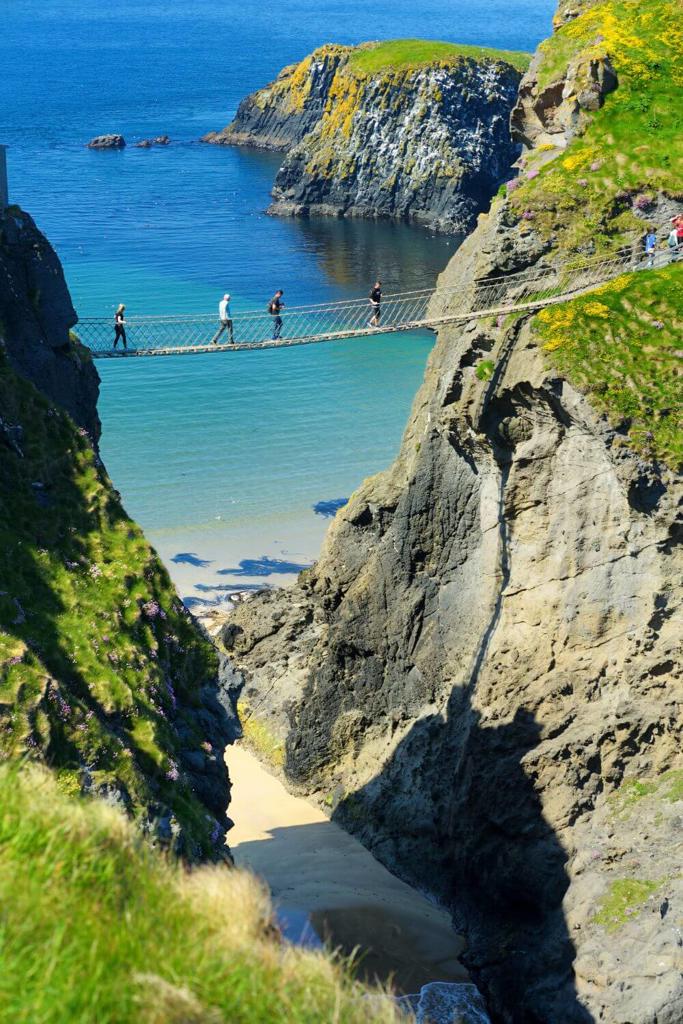
This man-made landmark in Northern Ireland spans 20 metres (66 feet) and is 30 metres (98 feet) above the rocks below. It was erected to reduce the reliance on the salmon fishermen of reaching the island by boat. Although the fishery is now gone, this landmark is now a popular tourist attraction and one of the best things to do in Northern Ireland along the Causeway Coast.
Visitors pay a fee to cross the bridge and spend some time on the island. Carrick-a-Rede is managed by the National Trust, who operate time slots for those wishing to cross the bridge. If it is unique landmarks you are looking to visit and will be spending time in Northern Ireland, then head to the Carrick-a-Rede Rope Bridge.
Location: 119a Whitepark Rd, Ballintoy, Ballycastle, BT54 6LS, Co. Antrim (UK)
Glendalough Monastic Site Wicklow
One of the most historical places in Ireland to visit is Glendalough in County Wicklow. This popular site is a monastic site located in the valley of Glendalough, not far from the two lakes. It is also part of Ireland’s Ancient East.
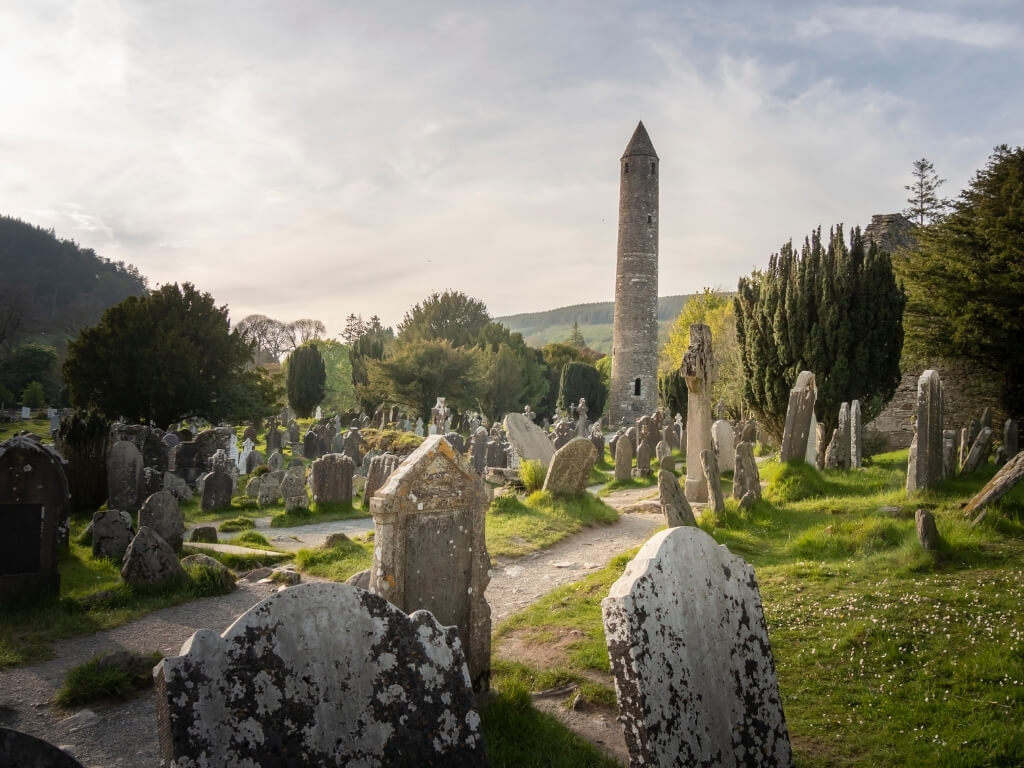
The early medieval settlement was founded in the 6th century by Saint Kevin and is probably most famous for its Round Tower which stands at a height of 30 metres high. As well as the Round tower, there are other buildings to explore, most of them in some state of ruin.
Glendalough monastic site includes no less than two cathedrals, a priest’s house, and several other churches which had several uses.
Glendalough also has two lakes or loughs, which are a great place for walking and hiking after visiting the monastic site. There are other monuments dotted around the loughs including additional churches. There are also the remains of a miner’s village at the top of the Upper Lough from the lead mines.
Glendalough is an important historical site in Ireland due to its association with Saint Kevin and early Christianity on the Emerald Isle, but it is also a beautiful natural landmark to visit. The lakes, as mentioned already, are a great place for walking and hiking around, and visitors to the area can also see one of the best waterfalls in Ireland, the Poulanass Waterfall.
Glendalough is also an easy day trip from Dublin, especially if you have a car, as it is just over an hour’s drive from Dublin City Centre. So, if you are staying in Dublin or starting a road trip around Ireland, Glendalough is a great historical landmark near Dublin to add to your itinerary.
Location: Glendalough, Bray, Co. Wicklow, A98 HC80
St Patrick’s Cathedral, Dublin
One of the famous landmarks in Dublin that is another historical site to visit on the Emerald Isle is St Patrick’s Cathedral in Dublin. Founded in 1191, it is the national cathedral of the Church of Ireland, but it is not the seat of a bishop, with the Archbishop of Dublin’s seat being in nearby Christ Church Cathedral.
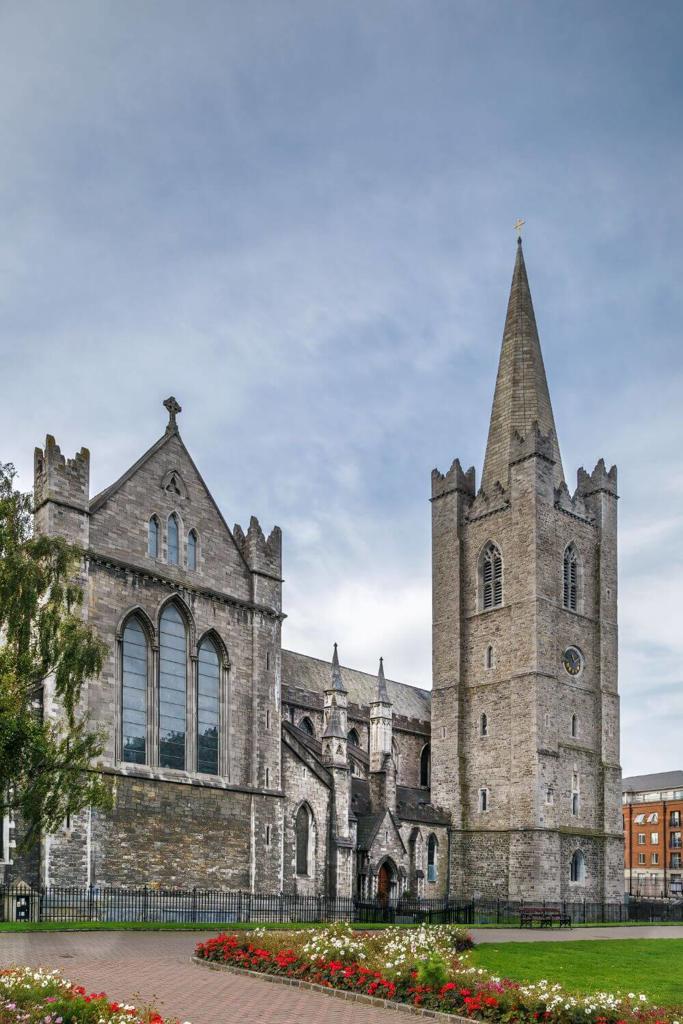
The basis of the present church was built somewhere between 1191 and 1270, with additional buildings and structures added over the next centuries including Minot’s Tower, and the west nave.
The cathedral was originally Catholic but after the Reformation in the mid-1500s, St Patrick’s became an Anglican church and has remained one ever since.
St Patrick’s is also associated with the Irish writer Jonathan Swift, author of Gulliver’s Travels, who was Dean of St Patrick’s between 1713 and 1745. Visitors to the cathedral can see his grave and epitaph. As well as this, visitors can enjoy the architecture and even see a baptism font said to have been used by St Patrick himself to baptize people into Christianity in Ireland. Guided tours take place throughout the day and visitors can also enjoy self-guided tours through an app.
Location: St Patrick’s Close, Dublin 8, A96 P599, Co. Dublin
Blarney Castle, Cork
One of the most famous places in Ireland also happens to be a great historical place to visit on the Emerald Isle. Blarney Castle is located in County Cork and attracts tens of thousands of visitors who come to see the castle and kiss the famous stone at the top.
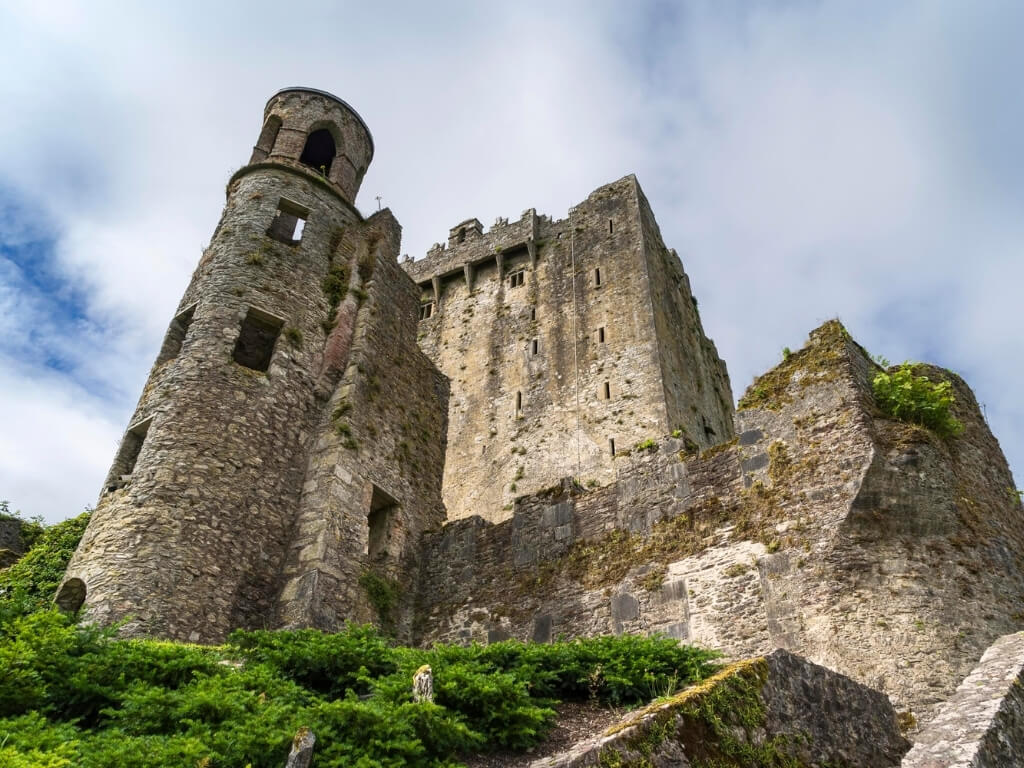
Blarney Castle is a medieval stronghold with the current structure dating from the mid-15th century. It is somewhat ruined but there are still rooms within to see and of course, the Blarney Stone on the top floor to kiss.
The Blarney Stone is one of the biggest reasons visitors flock to this historic site in Cork. It is said that those who kiss the stone will be bestowed the gift of the gab and never be lost for words again. And it is no mean feat to kiss the stone, with visitors required to hang backwards over the parapet edge to complete the ritual.
But this is not the only reason to visit Blarney Castle. There are extensive gardens and grounds which include a fern garden, poison garden, and two waterfalls. Blarney House, the Georgian Mansion on the grounds can be viewed from outside. And visitors can enjoy refreshments in the café located at the Stable Yard.
If you are looking for historical landmarks in Cork to visit and love visiting castles, then make sure to add Blarney Castle to your itinerary.
Location: Monacnapa, Blarney, Co. Cork
Kilmainham Gaol, Dublin
If you are looking to visit some historical Dublin landmarks, then one that should be top of your list is Kilmainham Gaol. This museum was a former prison and has many tales to tell those who choose to join one of the guided tours offered at this top Dublin attraction.
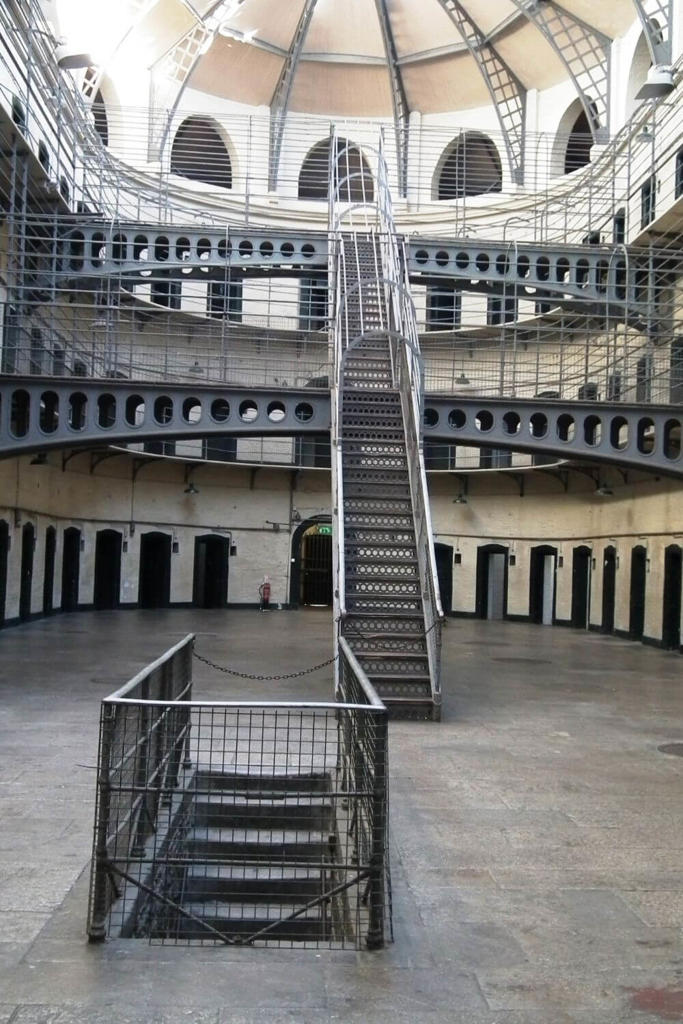
Built in 1796 to replace the old dungeon prison, it was used to house prisoners of all kinds until it was decommissioned in 1924 by the new Irish Free State. Prisoners were not segregated meaning men, women and children shared cells, meant to house 5 per cell, in conditions that were almost inhumane.
Prisoners spent their time in tiny cells, in the cold and dark with only a candle for a light which was meant to last 2 weeks. Children as young as 7 years of age, caught for petty theft, shared cells with adults.
Kilmainham Gaol had many prisoners during the years it was open but none were more famous than the revolutionaries including the leaders of the 1916 Easter Rising.
Visitors to Kilmainham Gaol join a guided tour in which you trace the history of the prison and those incarcerated in it. You can visit the cells of some of the most famous prisoners held there including Patrick Pearse and Joseph Plunkett. You can also visit the yard in which the leaders of the rising were executed.
As well as being one of Dublin’s top attractions to visit, Kilmainham Gaol is a hugely important historical site in Ireland and can easily be visited during a 3-day Dublin trip.
Location: Inchicore Rd, Kilmainham, Dublin 8, D08 RK28, Co. Dublin
Kilkenny Castle, Kilkenny
If you approach the town of Kilkenny from the M9 motorway, as you enter the centre of the town you will be greeted by one of the best historic landmarks in Ireland, Kilkenny Castle. It was built in 1195 to control an important point along the River Nore and the junction of several routeways.
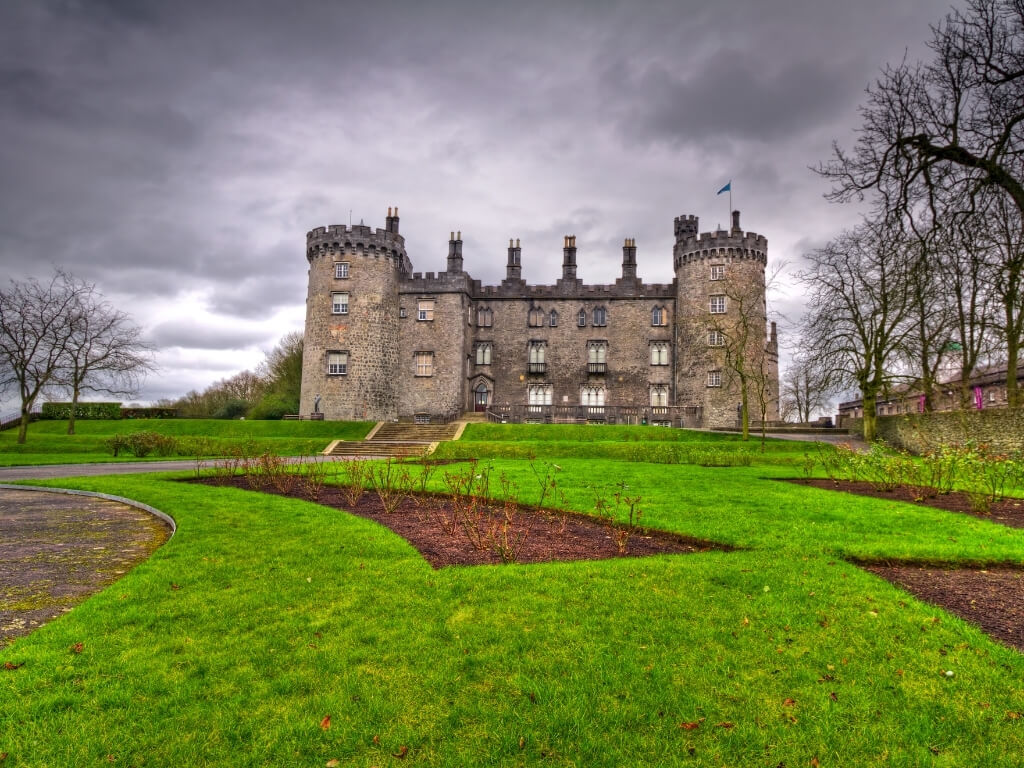
It is an impressive historical site that dominates much of the centre of the town and is a popular destination for those seeking historical sites to visit in Ireland. There is an entry fee to visit inside the castle, but the gardens and adjoining parklands are open to the public.
The castle was the seat of the important Irish family, the Butlers of Ormonde. The family arrived in Ireland during the Norman invasion of Ireland and soon rose to become a powerful family.
The castle is large, and visitors can either take a self-guided tour or join guided tours on which you will get a great introduction to the castle and its history. There are many different rooms and halls to visit throughout the castle, with one of the most famous being the Picture Gallery, a long hall whose red walls are adorned with a large collection of paintings.
If you are planning to visit Kilkenny Castle, allow several hours to tour the inside of this stately manor house as well as the gardens and parklands outside.
Location: The Parade, Collegepark, Kilkenny, R95 YRK1, Co. Kilkenny
Derry Walls, Derry
One of the best Northern Ireland monuments worth visiting if you are interested in history are the city walls of Derry. These medieval walls were built to protect the Scottish and English planters that moved to Ulster as part of the Ulster Plantation and are the only remaining complete set of city walls in Ireland.
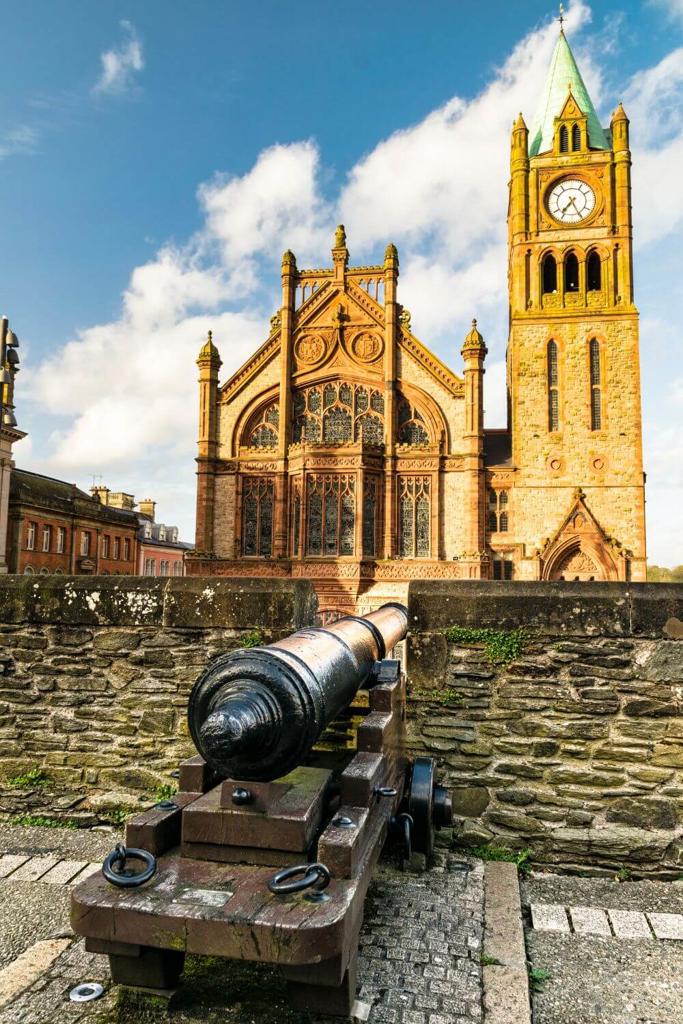
Built between 1613 and 1619 by the Irish Society, the walls are in the historical centre of Derry (or Londonderry as it was renamed after the building of the walls by the London consortium of livery companies).
The walls are approximately 1 mile in circumference and contain many of the city’s famous and important landmarks within. The walls contain seven gates in total including Bishop’s Gate, Castle Gate, and Butcher’s Gate, and they can be traversed entirely on foot. The view from the top of the city walls is worth it.
The Derry City Walls are also lined with 22 cannons from the 16th, 17th, and 18th centuries, many of which were used during the Siege of Derry in 1689.
Location: 44 Foyle Street, Derry, BT48 6AT, Co. Derry/Londonderry (UK)
Titanic Quarter, Antrim
One of the most famous landmarks in Northern Ireland is not just one landmark, but an area of Belfast that is famous thanks to a ship. The Titanic Quarter in Belfast, County Antrim is an area of the city that has been regenerated to include a museum dedicated to the ill-fated liner, maritime landmarks, film studios, apartments, and a Titanic-themed attraction centre.
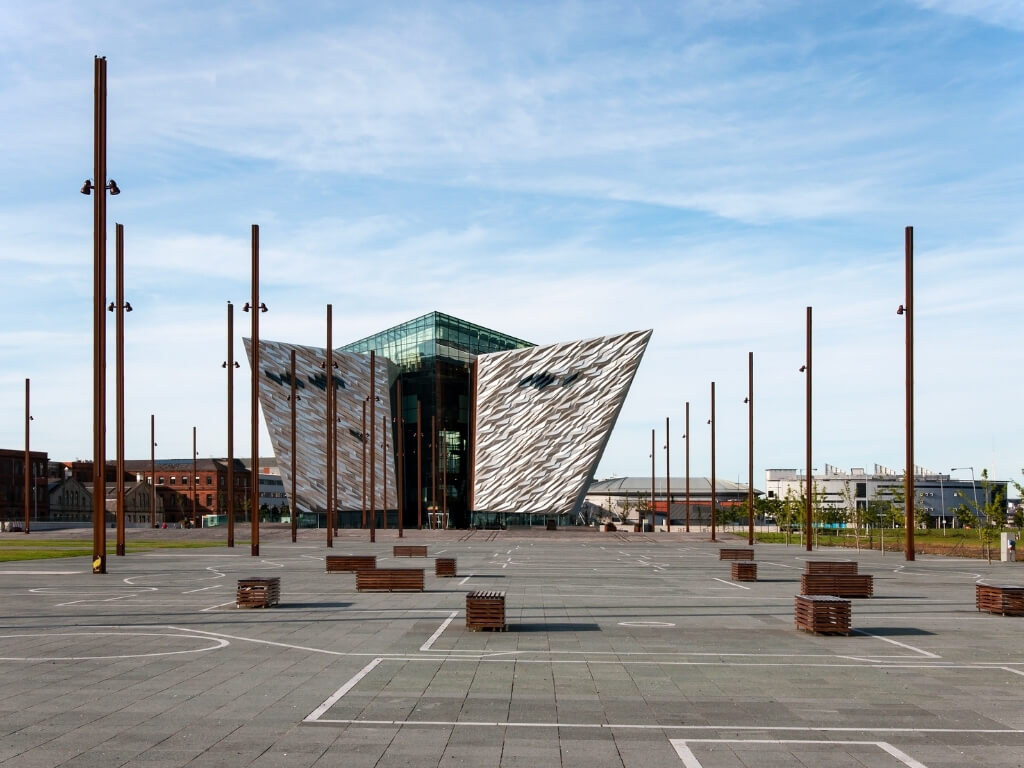
Titanic Quarter is located on the site previously owned by Harland and Wolff, the shipyard and builders who built the Titanic.
Titanic Belfast, the museum dedicated to the liner, is one of the largest structures and attracts hundreds of thousands of visitors each year. Visitors to the museum, built at the slipway where the Titanic was launched, can learn about the liner and the wider maritime history of Belfast and the Harland and Wolff shipyard in nine interactive galleries.
Also in Titanic Quarter is SS Nomadic, the last remaining White Star liner in the world. There is also a boutique hotel, Titanic Hotel Belfast where you opt to stay during your visit to the city. And visitors can also board HMS Caroline, a survivor of World War I now permanently docked in the Titanic Quarter. These are just a few of the buildings and things to do in this area of Belfast.
The Titanic Quarter in Belfast is a unique landmark in Ireland that is full of history and is worth adding to your list of things to do in Belfast.
Location: Titanic House, 6 Queens Rd, Belfast BT3 9DT, Co. Antrim (UK)
Final thoughts on the best historical landmarks in Ireland
There is a wealth of Irish monuments filled with history to quench everyone’s appetite for the past. From castles to other historical landmarks in Ireland, the north, south, east, and west of the country have plenty for visitors, no matter where you are visiting.
So, if you love history and want to know more about Ireland’s past, visiting any of the sites on this list will be a thoroughly enjoyable part of your trip.
Read about other Irish landmarks and visiting Ireland:
- Most Famous Landmarks in Ireland
- Top Natural Landmarks in Ireland
- Wonders of Ireland You Cannot Miss
- Best Places to Visit in Ireland
- The Six National Parks in Ireland
- Things You Must Do in Ireland
- What is Ireland Famous for?
